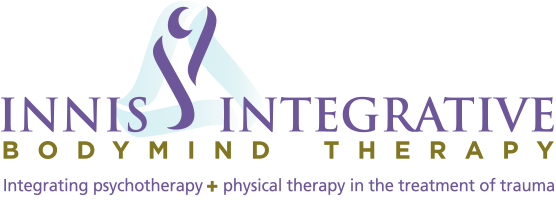Yes, your pain is real, but that doesn’t necessarily mean that something is wrong. Pain is a sensation created in our brains to keep us safe. But what if the brain is creating pain when there is no danger?
Pain is a summation of sensory input, our thoughts and associations about pain, our emotions and beliefs related to the pain, how we have dealt with pain in the past, and our personal life experiences. Not all pain is structural, such as tissue damage, inflammation, or nerve injury. Our brains can produce and/or amplify pain out of fear. It can also create pain because of physical and emotional stress, personality maladaptation from childhood stresses, and unfulfilled psychological needs. Pain is learned. Pain can also be unlearned.
There many factors involved with the creating and perpetuating of pain. Curable Health has a cute “map to pain” diagram which is worth looking at.
https://www.curablehealth.com/infographic/path-out-of-chronic-pain
It highlights some of the life experiences that contribute to the onset and perpetuation of pain. The pattern can start in early childhood with family challenges that requires protective adaptations, teaching the brain that it is safer to be hypervigilant. Repeated hypervigilance increases the sensitivity of the parts of the brain that are alerted when danger is present.
Personality adaptions that develop such as perfectionism, people pleasing, conflict avoidance, having high expectations of yourself, wanting to be liked, being hard on yourself, and having difficulty letting go are just a few of the traits that develop as coping strategies and can cause undue tension and vigilance on the nervous system.
Health scares that occur can bring on a sense of fear, or lack of safety. Sometimes that leads to unrealistic thought streams like catastrophizing or looping fear thoughts that tend to keep the alarm system switched on.
Everyday adult stresses, trauma, health crisis, illness, surgeries, or major life event, even happy and welcomed events, can contribute to increasing stress loads, increasing symptoms. As pain behaviors like fear of movement, avoidance behaviors, and obsessively “googling” symptoms are repeated, the brain changes and starts to learn pain neural pathways. As the pathways are repeated the brain becomes more sensitive and easily activated again.
The way out includes education, learning about your pain journey, how it effects your nervous system, and starting the process of rewiring your brain, cultivating safety and the feeling of control over your symptoms.
I have compiled a list of valuable website link resources.
www.curablehealth.com a good place to start. You can gain lots of information about mindbody syndromes and how to change the brain and therefore the symptoms associated with the syndrome. I invite you to go to the About tab and start listening to the podcasts by the professionals. Each professional has a website. Many of the provider’s websites have directories with a list of providers who might reside in your state. Most have published books which can be purchased.
I trained with Howard Schubiner, MD. I invite you to visit his website for more information and a list of practitioners.
http://www.yourpainisreal.com/
http://www.yourpainisreal.com/Other%20MBS%20Doctors
Lin Health
The Pain Psychology Center
https://www.painpsychologycenter.com/
https://www.painpsychologycenter.com/our-team.html
Back in Control
https://backincontrol.com/?fbclid=IwAR1EQ5sLxKnNVY4v3mKOwyfXLIcK65Lk3H5ZUBp0YyfFcS1jkZ6CTUXmh1c
Pain Reprocessing Therapy
https://www.painreprocessingtherapy.com/
https://www.painreprocessingtherapy.com/directory-of-practitioners
A few podcasts that are valuable in understanding treatment of pain:
https://podcasts.apple.com/us/podcast/like-mind-like-body/id1265323809?i=1000523187279
https://podcasts.apple.com/us/podcast/ologies-with-alie-ward/id1278815517?i=1000541375684
I hope you find these resources helpful as you embark on your own journey to chronic pain recovery. Your brain can change, from chaos to calm.
Call or contact me here.





